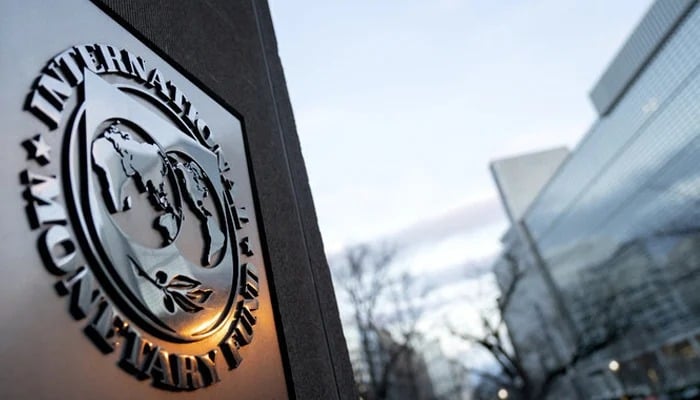IMF estimates Pakistan’s FY25 GDP growth at 3.5% amid inflation risks


- IMF warns global economy set for modest growth over next 2 years.
- Keeps 2024 global real GDP growth forecast unchanged from April.
- Growth in top advanced economies aligning as output gaps closing.
The International Monetary Fund (IMF) on Tuesday projected Pakistan’s economy to grow at a rate of 3.5% in the fiscal year 2024-25 (FY25), as against the government’s target of 3.6%, announced in the budget, amid lukewarm global growth.
Pakistan’s gross domestic product (GDP) may have expanded by 2.4% in the last fiscal year (2023-24), missing the target of 3.5%, according to the government’s economic survey for the last fiscal year.
Faced with chronic mismanagement, Pakistan’s economy has found itself on the brink, challenged by the Covid-19 pandemic, the effects of the war in Ukraine and supply difficulties that fuelled inflation, as well as record flooding that affected a third of the country in 2022.
The IMF in a World Economic Outlook (WEO) update warned that the global economy was set for modest growth over the next two years amid cooling activity in the US, a bottoming-out in Europe and stronger consumption and exports for China, but risks to the path abound.
The IMF kept its 2024 global real gross domestic product growth forecast unchanged from April at 3.2% and raised its 2025 forecast by 0.1 percentage point to 3.3%.
The forecasts fail to shift growth from the lackluster levels that IMF managing director Kristalina Georgieva has warned would lead to “the tepid twenties.”
But the revised outlook reflected some shifting sands among major economies, with the 2024 US growth forecast reduced by 0.1 percentage point to 2.6%, reflecting slower-than-expected first-quarter consumption.
The Fund’s 2025 US growth forecast was unchanged at 1.9%, a slowdown driven by a cooling labour market and moderating spending in response to tight monetary policy.
“Growth in major advanced economies is becoming more aligned as output gaps are closing,” IMF chief economist Pierre-Olivier Gourinchas said in a blog post accompanying the report, adding that the US was showing increasing signs of cooling, while Europe was poised to pick up.
The IMF significantly hiked its China growth forecast to 5.0% – matching the Chinese government’s target for the year – from 4.6% in April due to a first-quarter rebound in private consumption and strong exports. The IMF also boosted its 2025 China growth forecast to 4.5% from 4.1% in April.
Inflation is here to stay
The IMF warned of near-term upside risks to inflation as services prices remain elevated amid wage growth in the labor-intensive sector and said renewed trade and geopolitical tensions could stoke price pressures by increasing the cost of imported goods along the supply chain.
“The risk of elevated inflation has raised the prospects of higher-for-even-longer interest rates, which in turn increases external, fiscal and financial risks,” the IMF said in the report.
But China’s momentum may be sputtering, as Beijing on Monday reported second-quarter GDP growth of just 4.7%, significantly below forecasts amid weak consumer spending amid a protracted property downturn.
Gourinchas told Reuters in an interview that the new data poses a downside risk to the IMF forecast, as it signals weakness in consumer confidence and continuing problems in the property sector. To boost domestic consumption, China needs to fully resolve its property crisis, as real estate is the main asset for most Chinese households.
Protectionism remains a problem
The IMF also warned of potential swings in economic policy as a result of many elections this year that could have negative spillovers to the rest of the world.
“These potential shifts entail fiscal profligacy risks that will worsen debt dynamics, adversely affecting long-term yields and ratcheting up protectionism,” the Fund said.
The Fund did not name US Republican party candidate Donald Trump, who has proposed to impose a 10% tariff on all US imports, nor Democratic President Joe Biden, who has sharply hiked tariffs on Chinese electric vehicles, batteries, solar panels and semiconductors.
But it said that higher tariffs and a scaling up of domestic industrial policy could create “damaging cross-border spillovers, as well as trigger retaliation, resulting in a costly race to the bottom.”
Instead, the IMF recommended that policymakers persevere with restoring price stability – easing monetary policy only gradually – replenish fiscal buffers drained during the pandemic and pursue policies that promote trade and increase productivity.
Source link



